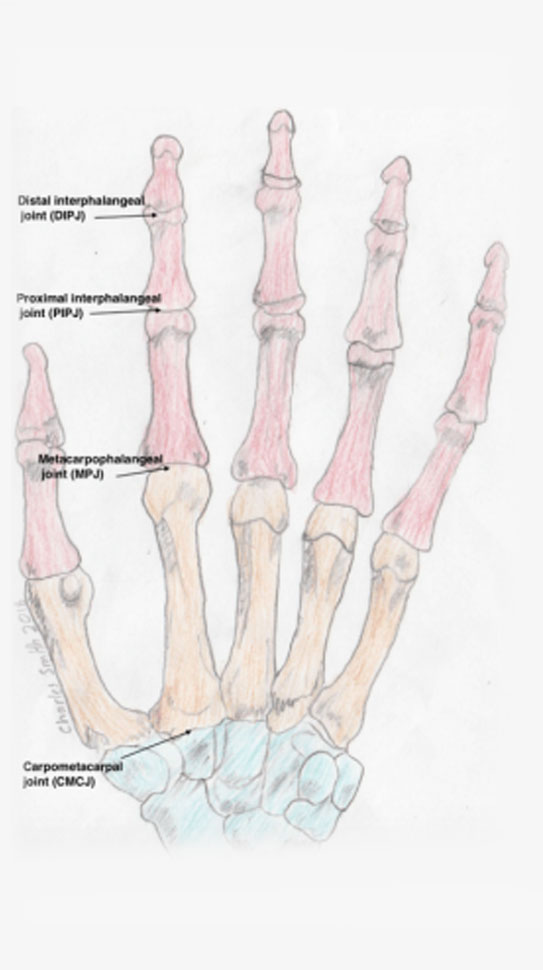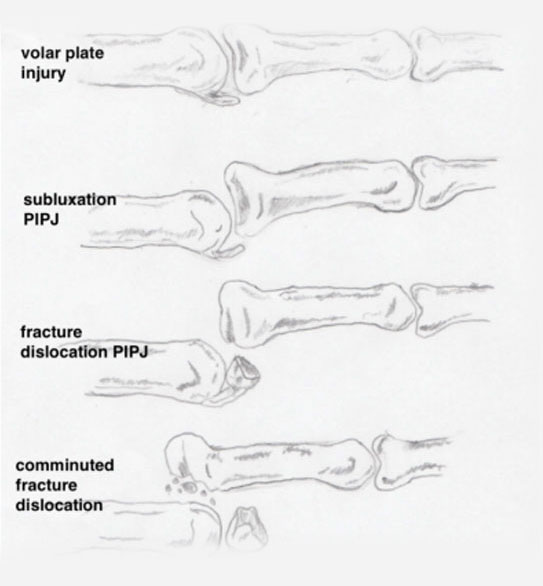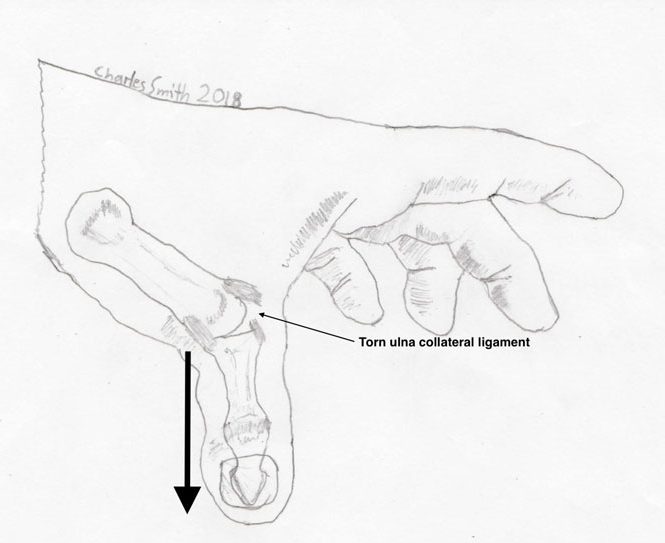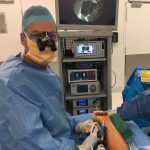Small Joint Injury
Introduction
The hand is all about movement, made possible by 19 small joints (see diagram). Injury of any of these joints can occur, with varying degrees of severity. If treated incorrectly or not treated, even mild injuries of these small joints can cause big problems for patients.
The stiffness of the injured joint is a frequent problem, which often lasts many months. Swelling around the joint, caused by the injury, may also last many months.
Treatment priorities
- Joint reduction. If a joint has been dislocated, it is important that it is realigned as soon as possible. Often this will occur on a sporting field, or the patient will “pop” the joint back in themselves. However, it is impossible to tell if the joint surfaces are correctly realigned without good quality X-rays. These should be performed promptly. If the joint remains incorrectly aligned, the joint cartilage can be irreversibly damaged quite rapidly. Rarely, surgery is required to realign the joint.
- Elevation. To minimize swelling from the injury, it is important to keep the affected hand elevated, that is, with the fingers pointing to the sky.
- Assess stability. It is important to determine that the joint surfaces will remain correctly aligned. Sometimes a fracture which affects a joint surface will make it impossible for the joint to remain aligned without surgery. Physical examination and X-rays will help the surgeon make this assessment.
- Early motion. Once the anatomy of the injury is understood, the joint is realigned and stable, then the joint must be moved, to prevent stiffness. Movement must occur gently at first, without loading. At the same time, a hand therapist may help decrease the swelling.
- Protection. The joint must be protected from further injury while it heals. Sometimes this involves a removable splint, sometimes simple taping is all that is required. Taping is best avoided initially, as it can make the swelling worse. Avoiding further injury is also important, especially not returning to sports too early.

Hand and wrist bones

Sequence of PIPJ injury severity
Some common types of injury
“Jammed finger” or volar plate injury of the PIPJ. This injury is very common among ball sports players. It is a ligament injury of the PIP joint without dislocation. Typically, the fingertip is struck end on by the ball. Pain and swelling around the joint begin soon after, which many people shrug off initially. Often the patient will become concerned when the pain and swelling continue and the joint starts getting stiff (stuck). X-rays show the joint is well aligned, but may also show a small chip of bone that has been pulled off by a ligament. This finding of a “fracture” often leads to concern, but the tiny fragment is not a problem, it is still essentially a ligament injury. The treatment is hand therapy, working on reducing the swelling and regaining motion. Often this takes months not weeks, much to the patients surprise.
PIP joint dislocation is a more severe ligament injury, where the ligaments are badly enough damaged that the joint surfaces loose contact. This results in obvious deformity through the joint. Usually pulling on the finger and correcting the deformity results in the joint realignment. However, when this has occurred, it is essential to have an X-ray afterward. A fracture near the joint can give a similar appearance but may require very different treatment. And other fractures associated with a dislocation need to be identified if present.
If it is a simple dislocation, once the joint is realigned, the shape of the joint surfaces combined with resting tendon tension is enough to keep the joint aligned, as long as it is protected from further injury or deviation.
The treatment is then much the same as for a jammed finger. Once the ligaments have healed and motion is regained, the joint should feel close to normal again. Dislocated joints are more likely to develop arthritis in the future, especially joints which have been left dislocated for more than an hour.
Again, the patient must realize that after a PIP dislocation, the joint may be swollen and stiff for 6 months. Hand therapy can speed recovery.
“Skier’s or gamekeepers thumb” is an injury to the ulnar collateral ligament of the thumb MPJ. This is located on the inside of the thumb, at the second joint from the tip. This ligament injury may require surgery (see diagram).
The injury occurs in skiers when they fall with the stock in their hand, and the thumb is pushed away from the hand, rupturing the ligament. Gamekeepers used to stretch out the ligament, by breaking the necks of pheasants, apparently.
If the joint deviates more than 40 degrees or so, the ligament is pulled from the base of the phalanx and may flip onto the wrong side of the edge of the overlying tendon. The tendon can then trap the end of the ligament away from where it should be so that it cannot heal back to the bone. Left untreated, this can lead to marked weakness of pinch strength, as there is nothing to prevent the joint opening up when a force is placed across it.
The treatment is surgical when the joint opens on stressing. The end of the ligament must be re-approximated to the phalanx, these days using “suture anchors”. Afterward, the repair must be protected with a splint for 4 weeks, but the early motion is often possible during this period, to prevent stiffness. Most activities remain possible with the splint on.
Many times the deviation is not so severe, and the end of the ligament lies near the bone. These injuries can be treated with a splint and gentle exercises, but again may take a number of months to settle completely.

Gamekeeper’s or skier’s thumb


